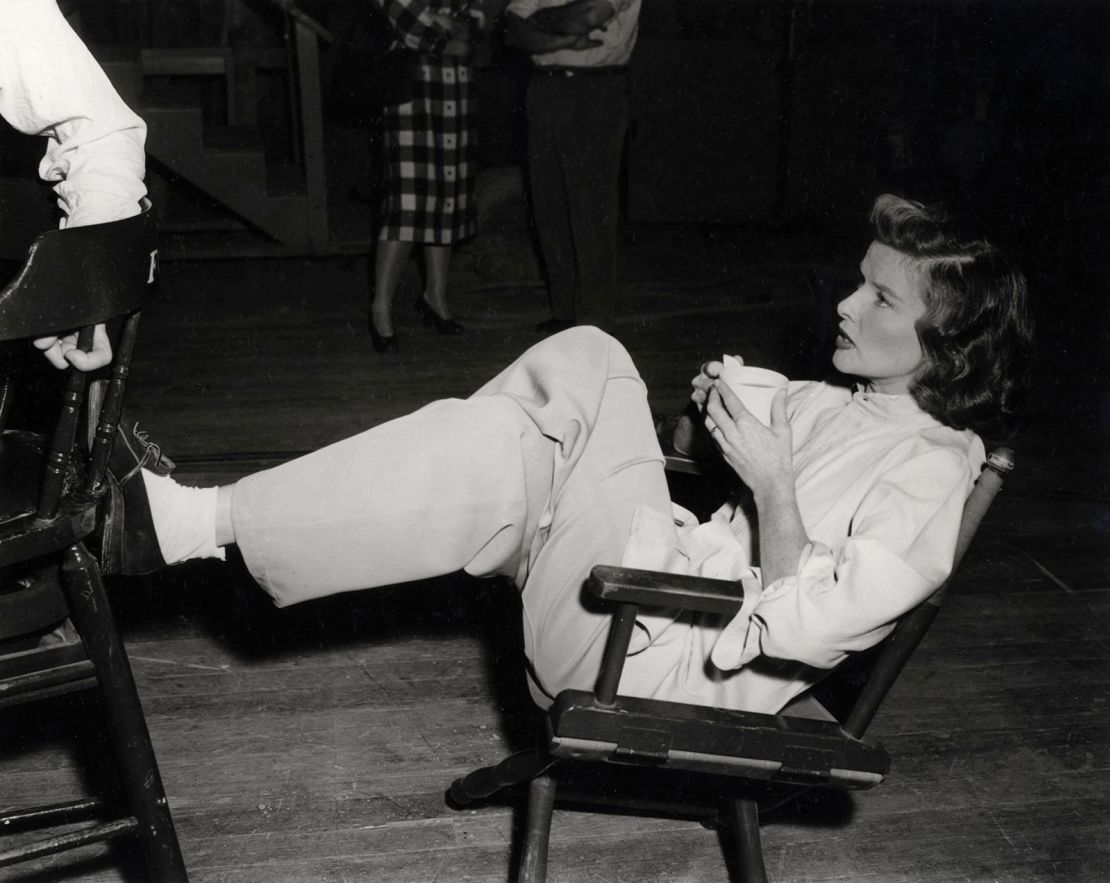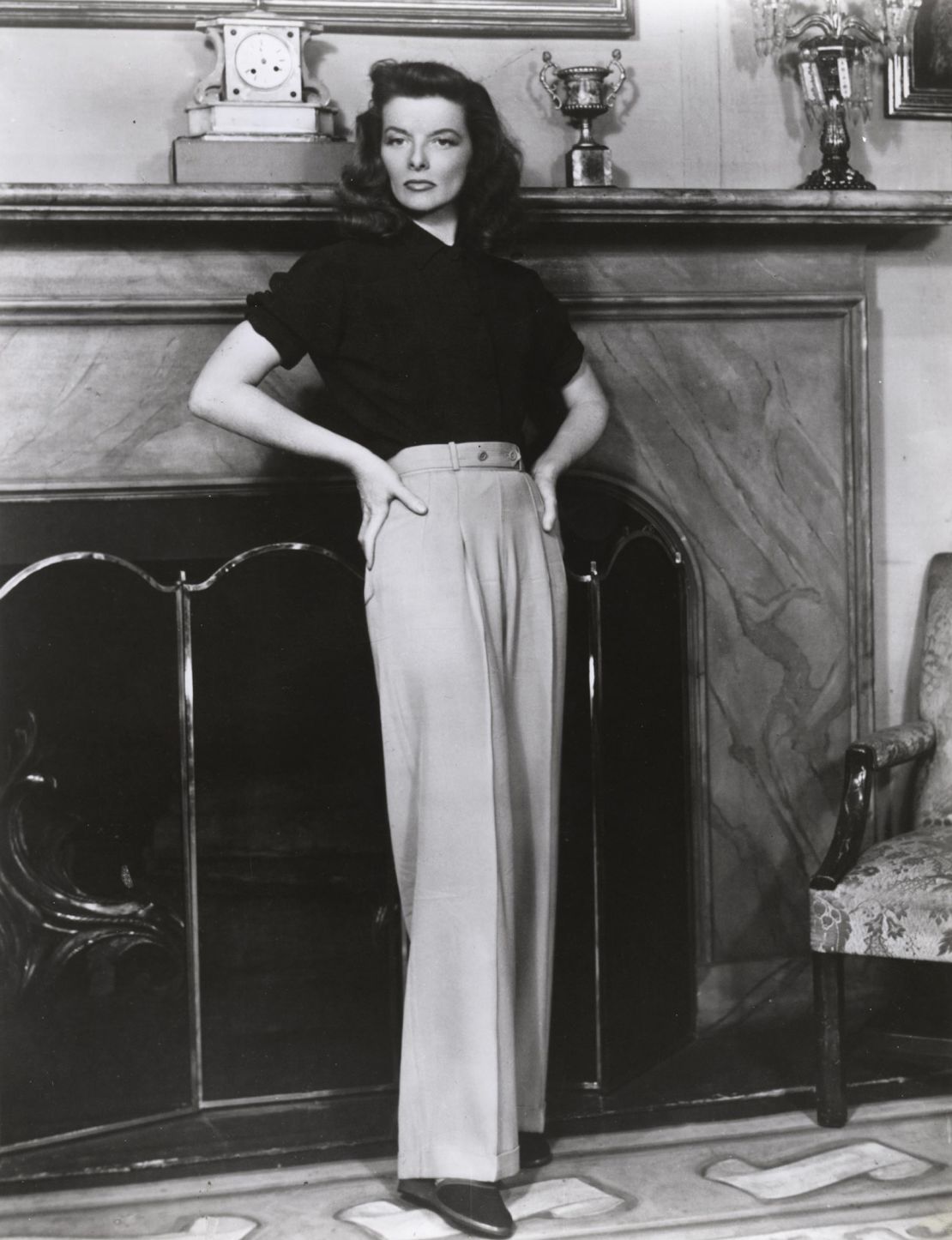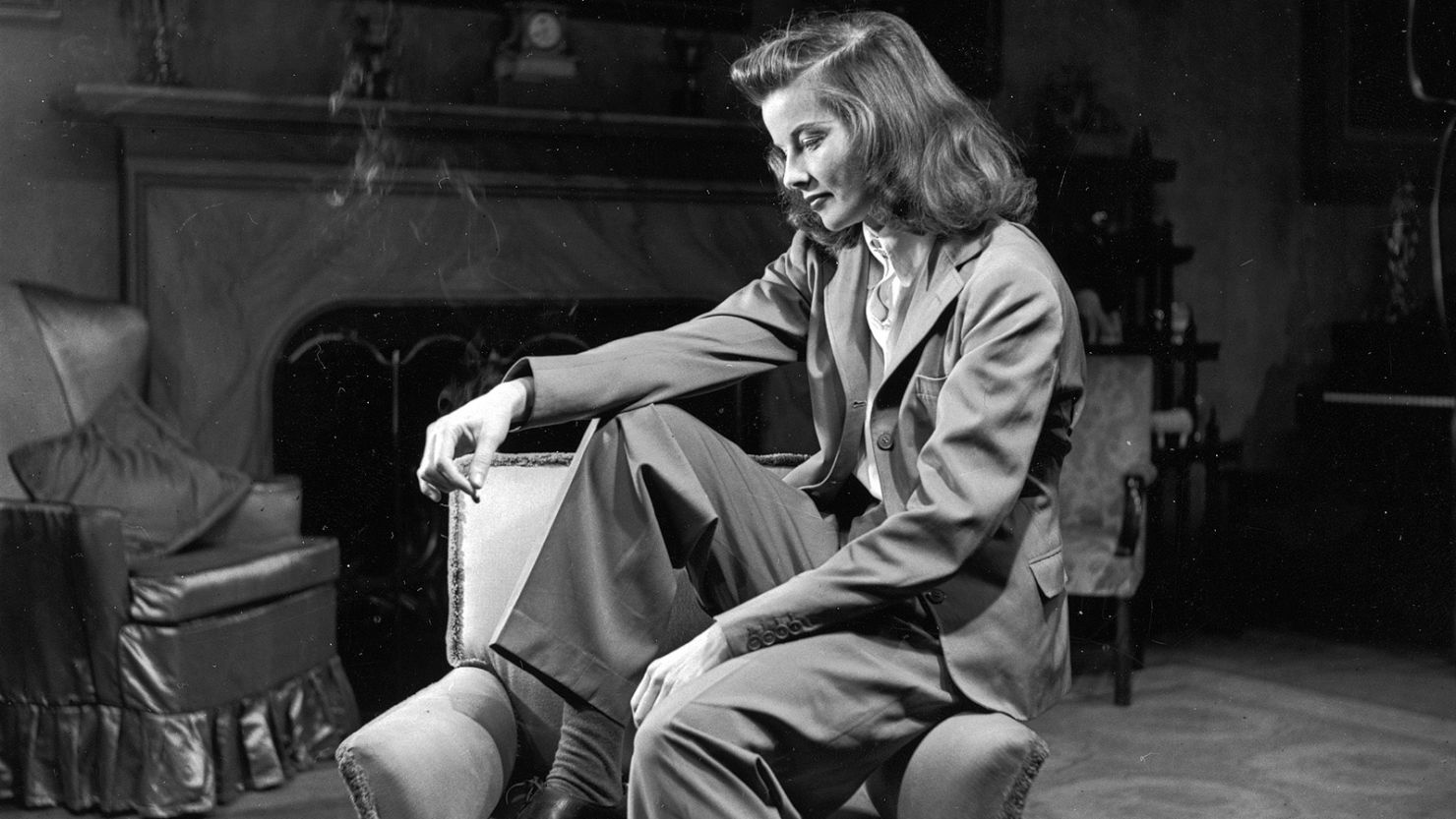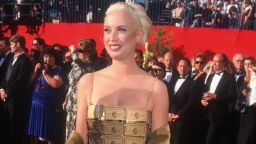Editor’s Note: Delving into the archives of pop culture history, “Remember When?” is a CNN Style series offering a nostalgic look at the celebrity outfits that defined their eras.
In a man’s world, Katharine Hepburn often wore the pants. The Hollywood leading lady and trailblazer defiantly embraced menswear staples, amid incredible pressure not to, paving the way for comfort-loving, power-dressing women decades on.
Who could forget the sleek velvet smoking jacket and pants she wore in “Woman of the Year”? Or that slouchy two-piece she wore while perched atop an armchair, with wrinkled socks, scuffed Oxfords and a devil-may-care attitude, in the pages of Life magazine?
But following her own style rules wasn’t always easy for Hepburn, a woman who would be later be revered as one of the greatest screen legends of all time and admired for her gumption. Studio staff hid her slacks backstage to stop her wearing them (she reportedly chose to go pantless until they were returned to her). Media outlets published lengthy articles questioning the Hollywood women who chose to wear men’s clothes. “Trousers for women are incredible, ridiculous and absurd!” Movie Classic magazine quoted Hepburn’s fellow actress Constance Bennett saying of the trend in 1933. “I can’t imagine wearing such atrocities.”
The American public was also unsure what to make of Hepburn strutting around in pants in the 1930s, before the practicalities of World War II would make them more commonplace among women. “Hepburn’s on- and offscreen choices left many critics and much of the public suspicious, even hostile,” wrote Hollywood historian William J. Mann in his 2006 biography of the star “Kate: The Woman Who Was Hepburn.”

In 1934, Hepburn fled to Paris with her friend Susan Steell. As Mann tells it, critics at the time were ripping apart her latest film “Spitfire” and her Broadway performance in “The Lake.” People also felt alienated by her “eccentric approach to gender, sexuality, and stardom,” he wrote.
Before that pivotal trip, Hepburn would dress in old clothes, wear no makeup and refuse to let publicists link her romantically with men (she lived with a woman, fueling rumors she was lesbian). She even spoke out about politics, supporting Upton Sinclair, a socialist Democratic nominee in the 1934 California governor’s race, and facing accusations of holding communist beliefs. “Then there were her movies — edgy and offbeat, glimpses of an alternative world where unmarried women held the upper hand,” continued Mann.
Take the 1933 romantic drama “Christopher Strong,” in which Hepburn’s pants-wearing character, aviator Lady Cynthia Darrington, has an affair with a married man. The film’s message seemed to renounce the idea of marriage entirely, with the neglected wife of Darrington’s lover (played by actress Billie Burke) saying: “Marriage and children make almost any woman old-fashioned and intolerant.”
“What’s fascinating,” Mann wrote of Hepburn, “is that this figure, reviled as subversive in so many ways, could be transformed — as the years passed — into a national heroine.” She would go on to win four Best Actress Oscars for “Morning Glory” in 1933, “Guess Who’s Coming to Dinner” in 1967, “The Lion in Winter” in 1968, and “On Golden Pond” in 1981, carefully crafting a persona along the way.

She turned herself into “a symbol of true-blue, red-blooded Americana because she had to if she was to survive and prosper,” wrote Mann.
Style trailblazer
Hepburn’s style was part of that story.
One of her greatest allies in crafting a new public image was Gilbert Adrian, chief costume designer at MGM from 1924 to 1941, who put Hepburn in that iconic goddess gown in “The Philadelphia Story” that has since inspired similar looks for the likes of Jane Fonda, Halle Berry and Cate Blanchett.
Adrian is also the man who — seeing how ahead of the times Hepburn was — backed her personal style and preference for pants by translating it onto the silver screen. A woman in menswear was still a rare occurrence, despite stars like Greta Garbo and Marlene Dietrich also blazing the way, according to fashion historian Kimberly Truhler.

“It is not too much of an overstatement to say that ‘The Philadelphia Story’ is revolutionary in its costume design,” Truhler wrote on her fashion history blog GlamAmor in 2014. “It features not one, but two examples of menswear… three if you include her equestrian ensemble as well. All of these outfits essentially open the movie, too, which was unprecedented… (Hepburn’s) desire to wear pants, particularly in the opening scene of this film, was objected to by both producer Joseph Mankiewicz and Louis B. Mayer. But her arrangement with MGM allowed a tremendous amount of control, and she literally showed them who wore the pants in their relationship.”
That velvet smoking jacket? That was also Adrian. Truhler said it would later influence the likes of Yves Saint Laurent, whose Fall-Winter 1966 collection introduced the iconic ladies’ tuxedo that he would continue including in all his collections until 2002.
Hepburn’s pant-led outfits have remained in the annals of style, making her pairing of blue jeans or high-waisted slacks with button-down shirts a quintessential “American look.” And if the ubiquity of trousers today is anything to go by, her legacy stretches far beyond the silver screen.

